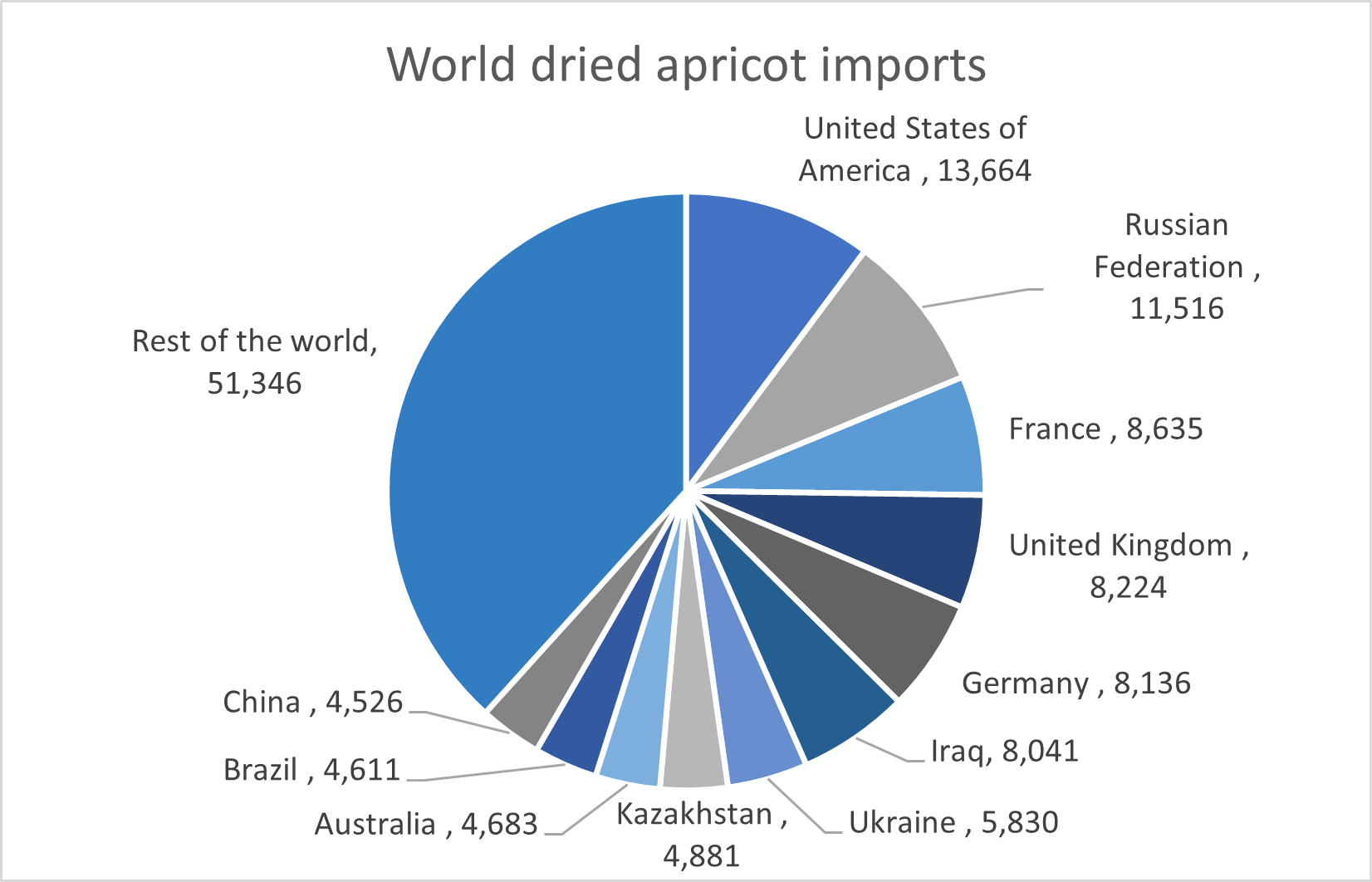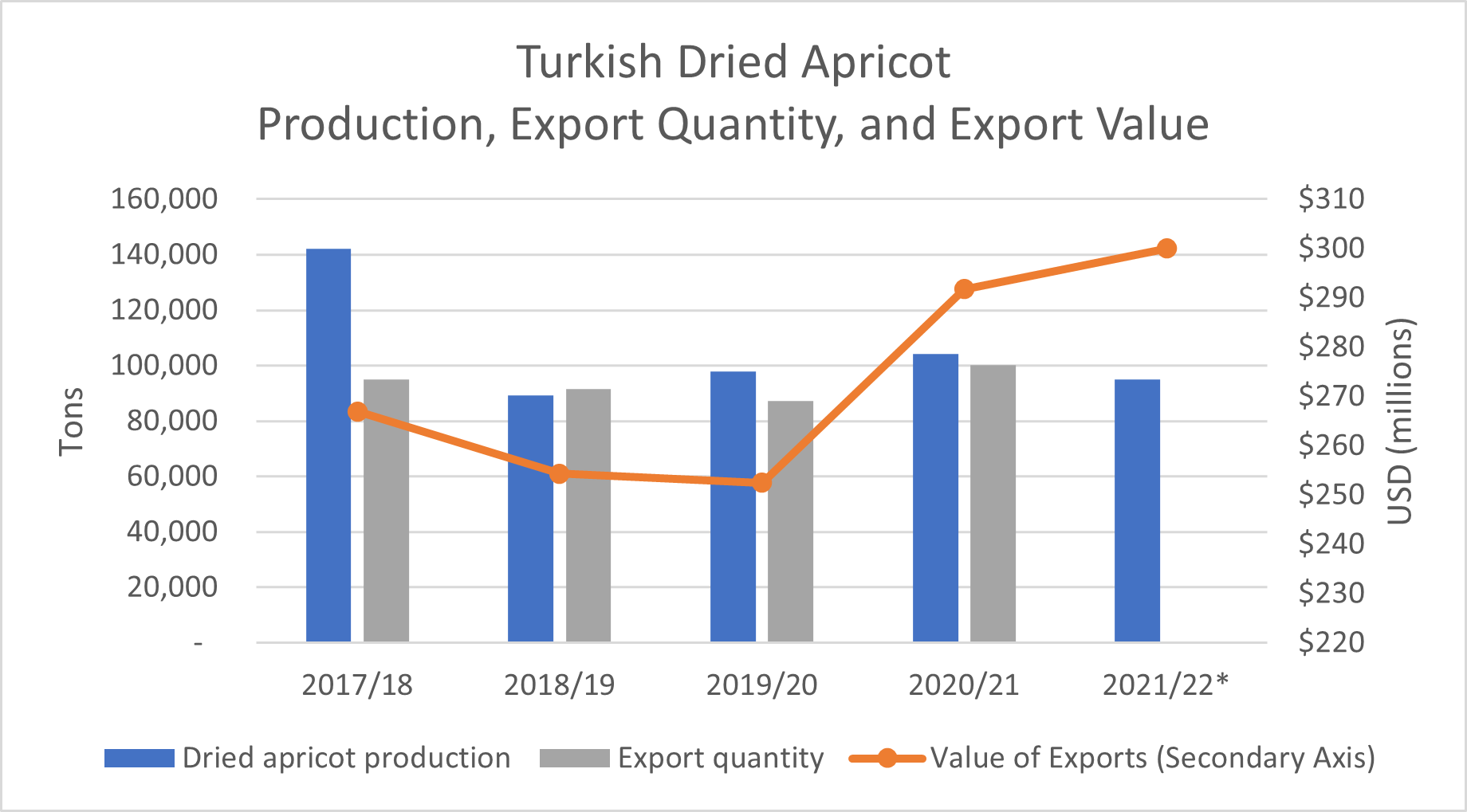Turkey’s ambitious export targets
Turkish dried apricots are renowned worldwide, being exported to 119 countries. The 87,119 tons of dried apricots exported in 2020/21 pulled USD 292 million of foreign currency into the Turkish economy. While this is already 16% more, on a value basis, than the 2019/20 season, Turkey is eyeing USD 500 million. This is according to Ramazan Özcan of the Malatya Commodity Exchange. Malatya province is the world’s epicenter of dried apricots, providing around 90% of Turkey’s dried apricots and more than half of the world’s dried apricot exports.
Demand comes from around the globe
Export destinations are well diversified and Turkish dried apricots go all over the globe. The biggest importer, the US, barely makes up more than 10% of imports, and the top 10 buyers make up only 58% of imports. While China is currently the 11th largest importer of dried apricots, they are firmly in Turkey’s sights. According to Ramazan Özcan, Turkey plans to increase their exports to China, saying “The first item on our agenda is to double exports to China. The Far East market is hungry and open to apricots.” In 2019, China imported 3,243 tons of Turkish dried apricots, but only 1,568 tons in 2020, opting for cheaper Afghan dried apricots instead.

Source: ITC Trade map
Dried apricot prices are soaring
The aggressive push to expand exports seems to be paying off, however, supply is having a hard time matching the pace. This marketing season (1 Aug - 31 Jul) started with a bang as 8,337 tons (USD30 million) were already exported this August, compared to 6,062 tons (USD19 million) in August 2020. Another 5,300 tons have left Turkey in the past three weeks and prices are through the roof. Traders are in a mad rush to buy, either for immediate export or to stock up their inventory for future exports. There is also competition from the juice market with two large juice companies having bought substantial volumes of apricots early in the season, leaving less for drying. Apricots were exported at around USD 2,900 / ton in 2019/20, and at around USD 3,400 / ton in 2020/21. Currently, prices are as high as USD 5,000 / ton FOB.
Supply struggling to keep up
The 2021 dried apricot crop, is estimated at 94,938 tons, 9% lower than last year, but exports are booming. This year’s target is to exceed USD 300 million, and at the rate this season kicked off, and in combination with high prices, they might leap this hurdle without breaking a sweat. There won’t be many changes to the 2021 crop estimate, with the harvest already nearing completion. It appears ending stocks will be very tight next July, given the way the marketing season started. Be that as it may, the area under apricots is expanding. In Malatya, 7.8 million trees were productive this season, but the total number of planted trees is nearly 8.8 million. This means that 1.0 million more trees will soon come into production, which is an increase of 13%. Should this also translate into a 13% larger dried apricot crop, and their bold marketing strategy pays off in East Asia, their USD 500 million target may well be within reach.

Sources: Aegean Dried Fruits and Products Exporters' Association Press Release, COMCEC * 2021/22 value of exports will exceed USD 300 million according to the press release
Sources:
TurkishAgri: Birol Celep: Dried Apricot Exports Increased by 16 Percent in 2020/21 Season
Commodity Board: Dried Apricots: Huge price increases continue
Tridge: Local Insights



